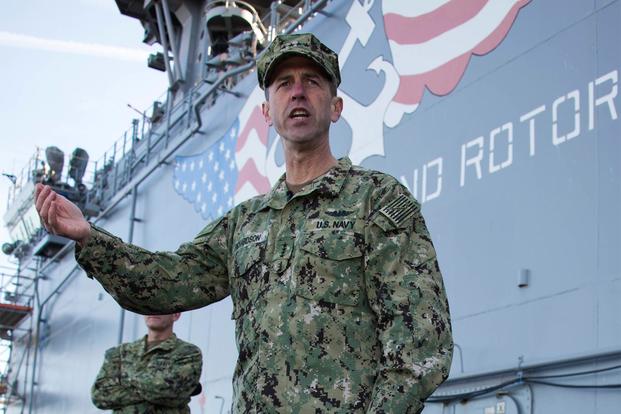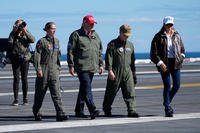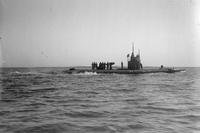With a new acquisition chief at the helm and a commitment to rapid prototyping and faster adaptation of new technology, the Navy is finding ways to collaborate with industry better and sooner, the service's top officer said Thursday.
Speaking at the Heritage Foundation in Washington, D.C., Chief of Naval Operations Adm. John Richardson said the Navy was beginning to "have meaningful conversations" with industry partners and those in research and development earlier in the acquisition process for major programs.
Some programs poised to benefit from this better teamwork with industry and an intentionally accelerated acquisition pipeline, he said, include the Navy's upcoming frigate and the future surface combatant, a family of ships envisioned to replace current cruisers and destroyers.
In the past, Richardson said, failure to bring the makers of Navy equipment in during concept development has proved costly and inefficient.
"We would have a set of requirements officers locked in a room until they come up with their set of requirements, and white smoke comes out, and they come out with 'hey, here it is,'" Richardson said. "And industry takes a look at it and says, 'that's great, but here's the thing, there's nothing that can do that. I've got to go and invent that.' Well, that's time and uncertainty and translates to money."
The Navy has been stung in the past by over-ambitious or flawed acquisition programs. The delivery of the first of the Gerald R. Ford class of supercarriers was beset by delays and billions in cost overruns in large part because of the integration of a number of dramatically new technologies, including the electromagnetic aircraft launch system, or EMALs, and advanced arresting gear.
Then there's the littoral combat ship, a multi-mission platform that ended up costing significantly more than estimated to build, continues to raise concerns about combat survivability, and still awaits full capability in its three intended mission areas.
In a December 2016 congressional hearing, then-Navy acquisition chief Sean Stackley said the LCS program "broke" the Navy.
"We have our program managers pretty much under a microscope right now, and we've taken things like cost and we've put cost into our requirements so that you don't get to ignore costs while you're chasing requirement," he said.
Richardson said Thursday that a number of programs, including the MQ-25 unmanned carrier-launched vehicle, and the Navy's growing family of unmanned underwater vehicles, as well as the future combatants, were in the 'fast lane' for accelerated acquisition, informed by industry insights.
"Even as we're delivering that step, we want to make sure that we are thinking about the next step already. So we get into these fast iterations of capability increase informed by what is technologically achievable, that allows us to ride that technology curve a lot closer," he said. "Now we've got to quicken the pace, we've got to do those iterative steps a lot more quickly than we are right now."
Richardson also cited the Navy's new head of acquisition, James "Hondo" Guerts, as an asset to finding improvements to the acquisition process. Guerts previously served as acquisition executive for U.S. Special Operations Command, which has long been a leader in rapid prototyping and early adoption of new technology.
"Secretary Guerts is educating us all about other ways to get this done as well," Richardson said.
-- Hope Hodge Seck can be reached at hope.seck@military.com. Follow her on Twitter at @HopeSeck.










